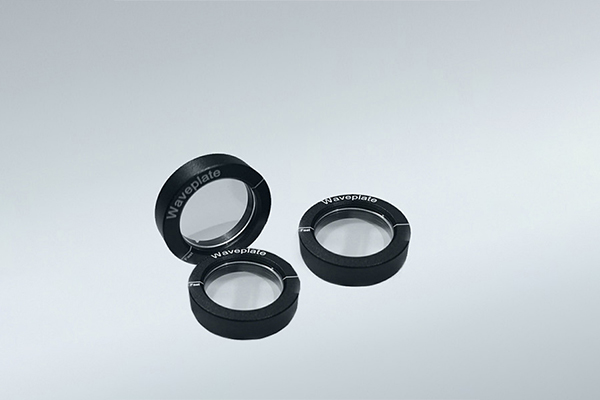Introduction to Wave Plates
Wave plates are important optical components for controlling the polarization state of light. They are also called retardation plates or phase plates. Wave plates are typically made of birefringent materials, most commonly quartz crystal. As the name suggests, birefringence has different refractive indices for light with different polarization directions, thus separating incident unpolarized light into parallel and orthogonal beams. In this article, we will briefly explore the complexity, types, and applications of wave plates.

What are wave plates?
Wave plates are thin plates made of birefringent materials. They are designed to introduce a specific phase delay between the two orthogonal polarization components of incident light. This phase delay can be a quarter wavelength (λ/4), half a wavelength (λ/2), or any other desired value. The primary function of a wave plate is to change the phase and polarization of light without attenuating, deviating, or shifting the beam.
Types of Wave Plates
1. Half-Wave Plate (λ/2)
Half-wave plates can change the polarization direction of linearly polarized light. They are used to rotate the polarization vector by an angle of 2θ and are ideal for applications requiring polarization rotation.
2. Quarter-Wave Plate (λ/4)
Quarter-wave plates can convert linearly polarized light into circularly polarized light, and vice versa. They are crucial in applications such as optical isolation where the direction of light must be controlled.
3. Multi-Order Wave Plate
Multi-order wave plates are constructed from a single birefringent crystal and produce integer multiples of the rated retardance. They are thicker and more sensitive to wavelength and temperature variations, but are less expensive and widely used in non-critical applications.
4. Zero-Order Wave Plate
Zero-order wave plates consist of two multi-order wave plates with their axes crossed, producing a net retardance equal to the difference between the two wave plates. They offer excellent temperature and wavelength stability.
5. Achromatic Wave Plate
Achromatic wave plates are composed of two dissimilar materials to minimize dispersion, making them suitable for broadband applications. They maintain consistent retardance over a wide wavelength range.
6. Superachromatic Wave Plates
These are an upgraded version of achromatic wave plates, offering flatter retardation over a wider wavelength range. They are ideal for applications requiring extremely precise polarization control.
Wave Plate Applications
Wave plates are widely used in a variety of optical systems and applications, including:
Telecommunications: For polarization management in fiber optic systems.
Microscopy: For enhancing contrast and resolution in polarized light microscopy.
Spectroscopy: For controlling light polarization to improve measurement accuracy.
Laser Systems: For adjusting polarization to optimize laser performance and reduce feedback.
Choosing the Right Wave Plate
Selecting the right wave plate requires consideration of several factors, such as wavelength range, temperature stability, and application requirements. Zero-order wave plates are preferred for environments subject to temperature fluctuations, while achromatic wave plates are ideal for broadband applications.
Conclusion
Wave plates play a vital role in modern optical systems, controlling the polarization state of light. Understanding the differences between different wave plate types and their applications can significantly improve the performance of optical devices. MOK Optics is a leader in providing high-quality wave plates tailored to specific needs. For anyone looking to optimize their optical system, exploring MOK Optics’ products is a worthwhile endeavor.
